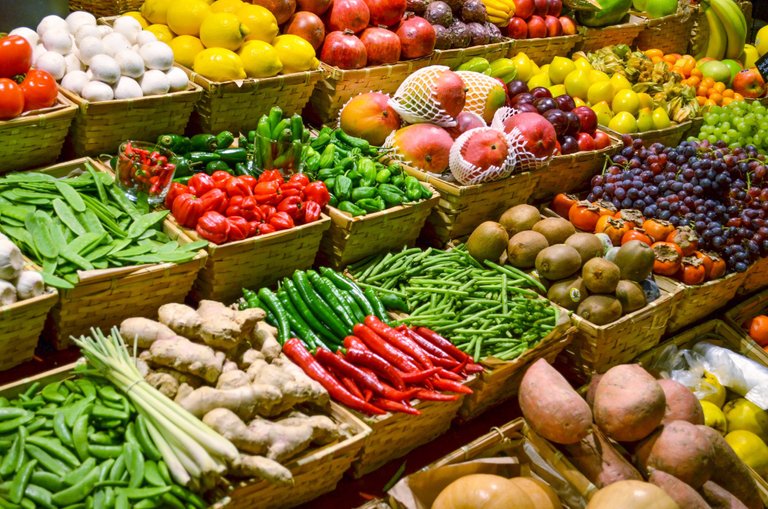
Vegetables You Should AVOID Today
This post may piss you off a bit because most of us has been led to believe that all vegetables are created equal.
Well in a second you going to be exposed to the 10 veggies that you need to be cautious of..
Corn

Corn is a big problem in your diet, it's grilled on the BBQ in summers, popped into bags for movies, processed into a syrup, scooped into salsas, and made into breakfast cereals.
Corn has been the subject of serious genetic modification.
The problem with GMOs is that when new genes are added to corn, our bodies are then introduced to new proteins that we do not recognize, usually resulting in major sensitivities, hormonal changes and changes within the digestive tract.
Corn is also one of the most common food allergens in North America and is fed to cows in order to fatten them up and create a nice marbling affect in the meat.
Imagine what it’s doing inside of our bodies. If corn is a must, definitely opt for organic.
Bell Peppers

Many North Americans suffer from inflammation, which is one of the biggest precursors to heart disease, cancer and diabetes.
Although the inflammation that causes these diseases is usually from heavily processed or refined foods, stress and genetics; nightshades, such as peppers, may definitely contribute.
Peppers contain the alkaloid, solanine, which can disrupt nerve function and lead to twitching, convulsing and trembling. Bell peppers also pose a problem for joint health.
Unfortunately, this vegetable is not recommended for people with rheumatoid arthritis, osteoarthritis or people with any joint issues.
Peppers have also made their way on the dirty dozen list.
Conventional Spinach

Conventional, meaning non-organic, spinach is also on the unhealthiest vegetable list.
While spinach is loaded in vitamin A and K and has anti-cancer properties, conventional spinach has one of the highest levels of pesticides.
Spinach has more than 48 pesticide residues found on it according to the USDA Pesticide DataProgram.
That means a big risk of carcinogens, hormone disrupting and neurotoxins.
Spinach also contains oxalates and purines, which can lead to gout and kidney stones.
Again, those with kidney problems, it might be best to stay away.
Eat raw organic spinach for your local whole foods or farmers market
Cherry Tomatoes

Cherry tomatoes are a great snack and the lycopene within tomatoes are known to protect against prostate cancer and osteoporosis.
However, tomatoes are nightshades that can increase inflammation within the body, especially within the joints.
It's a good idea for anyone with arthritis or joint problems to limit their consumption of tomatoes.
Cherry tomatoes have also landed themselves on the dirty dozen list containing about 35 pesticide residues.
Celery

Many people deem this vegetable to be close to nutrition less, a simple vessel for dips and not much else.
Although this vegetable does pack a fibrous punch and new research has shown its powerful anti-inflammatory antioxidant properties, celery is high up on the dirty dozen list.
According to the USDA, celery has been found to have 68 pesticide residues; most of these pesticides being potent-hormone disruptors. It’s time to jump on the organic celery bandwagon.
Squash

Summer squash is chock full of great minerals, fibre and vitamins; yet, it’s another one that’s made the dirty dozen plus list.
Similar to spinach, summer squash is contaminated with organophosphate insecticides and according to the USDA, has 41 pesticide residues, most of them being hormone disruptive and toxic to bees.
Summer squash is another one that’s on the oxalates list and can play a role in kidney stones, so those with kidney problems may want to monitor their intake.
So did any of those veggies surprise you..
As the world has evolved we tend to want things faster and want the portions to be larger.
And many of the food agencies around the world are not cautious when it comes to spraying harmful pesticides on your fruits and vegetables.
And not to mention the genetical modified adjustment that is done to these poor vegetables so they can grow faster and last longer.
So What do I do?
Visit your local whole foods or farmer markets for your fruits and vegetables.
I haven’t eaten non organic vegetables in the past 5 years and I look and feel younger than ever..
Don’t believe me, check me out here, I am a very active energy filled chap. And not just that my mother is 60 years young and her doctor is always clueless to how she is keeping her blood pressure and cholesterol levels so low.
I keep my mom, who is my biggest fan, equipped every month with the right nutrients and minerals so she can be around to see my kiddos graduate.
But In the later chapters I will show you the exact veggies you need and how they will start to neutralize fat and toxins out of your body immediately.
Why Should I Eat More To Lose?
This is probably the most asked question in the world.
What do I eat and how much?
I take a very different an unconventional approach to foods and let me tell you why.
Most of us grew up eating the wrong foods including myself.
Our mom and pops did not own farms where food is grown and raised naturally.
Unfortunately we do not have that luxury.
So I can give you the best meal plan in the world and you would probably follow it for 30 days but on day 31 you will fall back to the old lifestyle.
Right?
On top of that we still believe that we should eat less to lose weight.
Let me give you brevity of the process when you eat less food and starve yourself.
When you start a diet and you start eating less food you are teaching your body to store and reserve food because your body doesn't know when it will get its next meal.
So say, if this goes on for 30 to 90 days, when you come off that diet, not only do you gain the weight back you gain more.
Your body will continually store the food even though it is getting enough; you have taught your body an unhealthy routine which is why you will gain an extra 10 or 20 pounds fast.
This same thing happened to Oprah years ago when she would go on those starvation diets.
I want you to eat until you feel satisfied.
Don't over eat to the point you feel sluggish and lethargic.
The key is to eat foods that are as close to nature as possible and do not eat to get fat or full.
In the system you will see on Day 7 you have a cheat day where you can eat whatever food you desire.
Our body over the years has learned and became addicted to good tasty heavily seasoned food.
But our goal is not to drastically change our diet where we are just eating salads and chicken breast for the rest of our lives.
My system shows and promotes the detox daily methodology, eliminating what the body doesn't need on a daily basis.
But before I get into that let’s talk about starches.
Starches Foods
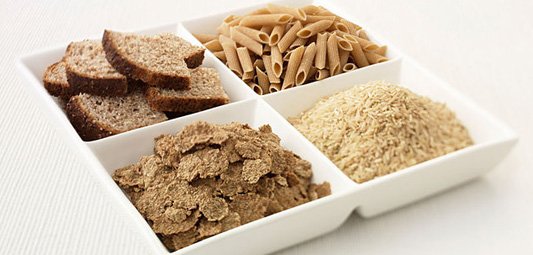
Starchy foods are a good source of energy and the main source of a range of nutrients in our diet.
As well as starch, they contain fiber, calcium, iron and B vitamins.
Some people think starchy foods are fattening, but gram for gram they contain fewer than half the calories of fat.
Just watch out for the added fats used when you cook and serve them: this is what increases the calorie content.
Starch is by far the most important of the polysaccharides.
It constitutes more than half the carbohydrates even in affluent diets, and much more in poorer diets.
It is supplied by traditional staple foods such as cereals, roots and tubers.
Starch (in particular cornstarch) is used in cooking for thickening foods such as sauce.
In the industry, it is used in the manufacturing of adhesives, paper, and textiles and as a mold in the manufacture of sweets such as wine gums and jelly beans.
It is a white powder, and depending on the source, may be tasteless and odorless.
Rice and grains
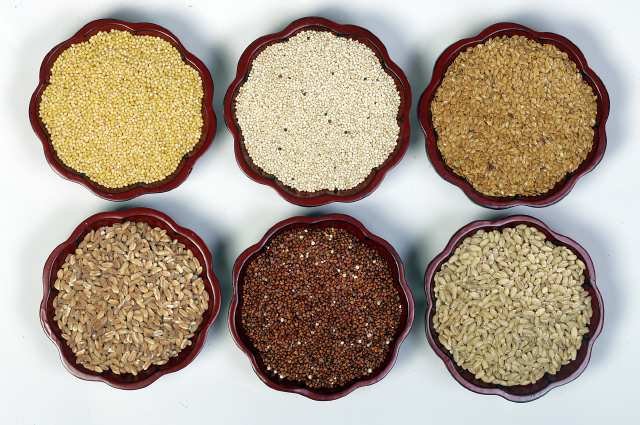
Rice and grains are an excellent choice of starchy food.
They give us energy, are low in fat and good value for money.
There are many types to choose from, including:
Couscous, bulgur wheat, all kinds of rice, such as quick-cook, Arborio, basmati, long grain, brown, short grain and wild .
Along with carbohydrates, rice and grains also contain:
protein, which the body needs to grow and repair itself, fiber, which can help the body get rid of waste products, B vitamins, which help release energy from the food we eat, and help the body to work properly
Rice and grains, such as couscous and bulgur wheat, can be eaten hot or cold and in salads.
Avocados
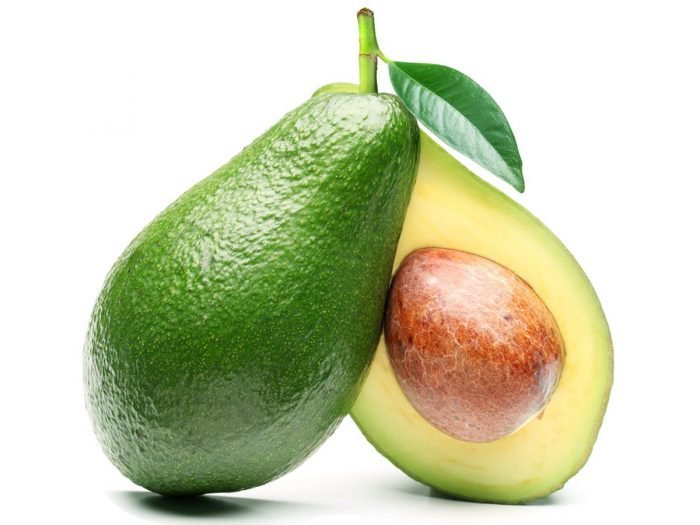
The avocado is a fruit (not a vegetable) originally found in the Central Mexico region, which ripens after it is picked.
There are more than 500 of varieties of avocado and it has been cultivated for more than 10,000 years.
It is also known as the alligator pear because of its scaly skin. The outside skin and the pit are inedible, despite millennia of efforts (I mean, they are edible, sort of like gravel is technically edible).
Creamy Deliciousness & Nutritious!
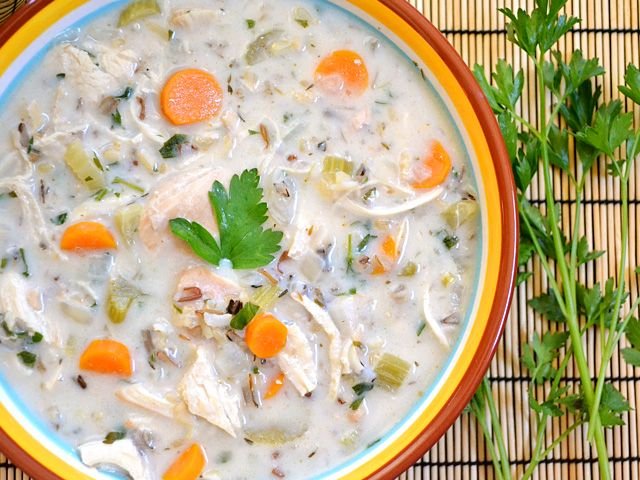
While avocados have a high caloric count (one avocado is 320 calories), the various nutrients and “healthy” fats make it a must- eat. Some call the avocado the alphabet fruit because of all the vitamins it contains.
One avocado provides your body with vitamins A, C, E, K and B6, along with an enormous amount of potassium and “healthy” fat. Perhaps the biggest health benefit of avocados is that by adding avocado to certain foods, you can improve your absorption of nutrients.
This means that when you combine other fat burning foods with avocado, you can improve your nutrient absorption up to 400%! Avocados can also reduce the signs of aging, regulate blood sugar and improve eye health.
Good for the Heart
The fat content of an avocado provides protection against heart diseases.
Studies have shown that oleic acid improves cardiovascular health. Oleic acid is the primary fatty acid in avocadoes.
Many people now take supplements in order to consume more omega-3 fatty acids to lower their risk of heart disease. Avocadoes are rich in omega-3, delivering 160 milligrams per cup of alpha-linolenic acid.
Vegetarians and Vegans Rejoice – Protein!

Avocadoes provide all 18 essential amino acids necessary for the body to form a complete protein.
Unlike the protein in steak, which is difficult for most people to digest, avocado protein is readily absorbed by the body because avocadoes also contain fiber.
If you are trying to cut down on animal sources of protein in your diet, or if you are a vegetarian or vegan seeking more protein, avocadoes are a great nutritional ally to include not merely as an occasional treat, but as a regular part of your diet.
The Benefits of Having 1 Avocado Per Day
Lower cholesterol levels
Avocados are rich in a compound called beta-sitosterol which has been shown to be effective in lowering blood cholesterol levels.
According to a study, patients with mild hypercholesterolemia who included avocados in their diet for 7 days had 17 percent decrease in total blood cholesterol levels, a 22 percent decrease in both LDL (bad cholesterol) and triglyceride levels, and a 11 percent increase in HDL (good cholesterol) levels.
Control blood pressure
Avocados are also a great source of potassium, which helps in controlling blood pressure levels.
Anti-Inflammatory properties
Phytonutrient compound found in avocados, such as polyphenols and flavonoids have been found to have anti-inflammatory properties, thereby reducing the risk of inflammatory and degenerative disorders.
Promote eye health
Avocado is an excellent source of carotenoid lutein, which known to help protect against age-related macular degeneration and cataracts.
Regulate the blood sugar levels
The monounsaturated (good) fats in avocados can reverse insulin resistance which help to regulate blood sugar levels.
Avocados also contain soluble fiber which keep a steady blood sugar levels.
Prevent birth defects
Avocados are rich in folate, a B vitamin commonly known as folic acid. One cup of avocado provides about 23% of the recommended daily value of folate.
The high amount of folate in avocado is essential in the prevention of birth defects, such as neural tube defect and spina bifida.
Reduce strokes risk
The high levels of folate in avocados may also protect against stroke. A study has shown that individuals who ate a diet rich in folate had a lower risk of stroke than those who did not
Protect against cancer
Many studies have shown that avocado can inhibit the growth of prostate cancer. The oleic acid in avocado is also effective in preventing breast cancer.
Fight free radicals
Avocados contain glutathione, a powerful antioxidants that helps
fight free radicals in the body.
Anti-aging properties
Being rich in antioxidants, avocado is beneficial in preventing aging symptoms. The glutathione in avocado may boosts immune systems, slows aging process, and encourages a healthy nervous system.
Cure bad breath
Avocados are one of the best natural mouth wash and bad breath remedies. It cleanses intestine which is the real cause of coated tongue and bad breath.
Increase nutrient absorption
Avocado intake is linked with an increased nutrient absorption.
A study suggests that, when participants ate salad included avocados, they absorbed five times the amount of carotenoids (a group of nutrients that includes beta carotene and lycopene) than those who did not include avocados.
Skin Care
The avocado oil is added in many cosmetics because of its ability to nourish the skin and make your skin glow. It also aids in treating psoriasis, a skin disease that causes skin redness and irritation.
Fibers
To keep this very simple, High Fiber diets is what boost fat loss. Fiber is typically found in legumes, vegetables, fruits and grains.
Unlike proteins and carbs, fiber passes straight thru the body it doesn't need to be broken down by the body.
It will also control your sugar levels and promote a healthy bowel movement, lowering cholesterol level and helping blood sugar levels.
Here are a few of fiber snacks you can chew on when you have
that craving urge.
1 Orange Spinach Smoothie
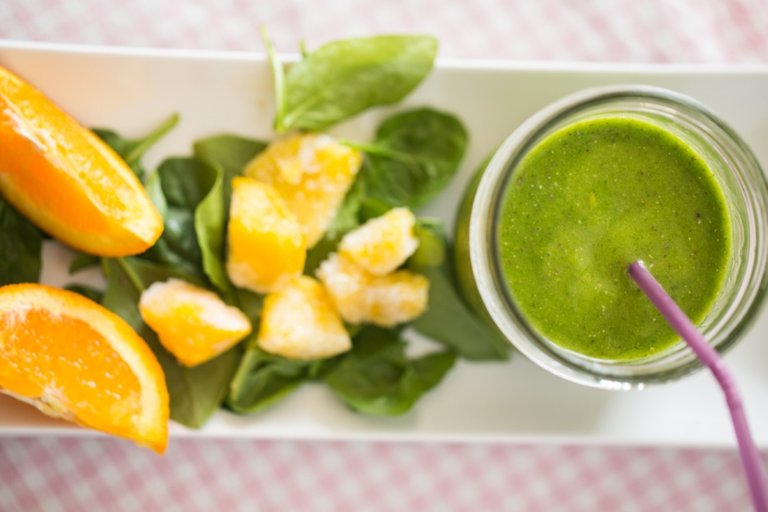
This tasty treat goes down easy while sneaking in tons of fruits and veggies.
Toss 1 large orange (peeled and separated), ½ a large banana, 1 handful of strawberries, 2 cups of spinach, 1/3 cup of plain Greek yogurt, and 1 cup of ice into a blender. Store any leftovers in the freezer for tomorrow (pro tip: Pour the leftovers in ice cube trays for easier blending).
2 Raspberry Cream Cheese Toast

1 slice of whole-grain bread, spread with 1 to 2 tablespoons of low-fat cream cheese, and top with ½ cup of raspberries (1 cup of raspberries has eight grams of fiber, so feel free to add a few extra, or snack on another handful while making the toast).
3 Mediterranean Artichokes
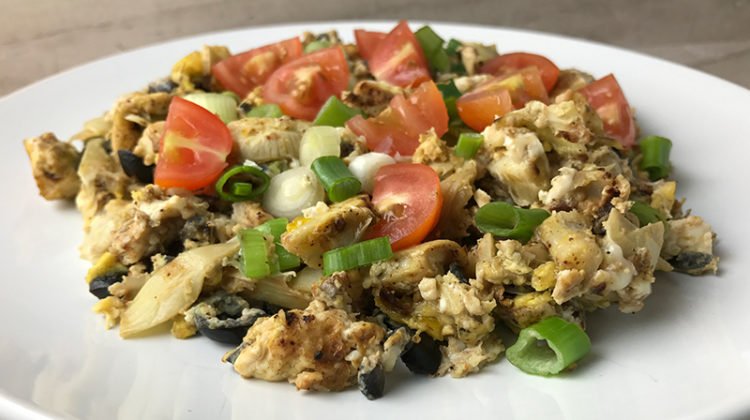
Strain a 1 6-ounce jar of artichokes to remove all liquid. Snack on them as-is, or get fancy by topping it with 1 tablespoon of feta, a squeeze of lemon juice, a little olive oil, and some cracked pepper.
This six-ounce (or ¾ cup) serving of the hearts (the center portion of an artichoke) has more than seven grams of fiber. Plus, they’re a rich source of vitamin C. (We won’t tell anyone if you stick a fork in the jar.)
4 Enlightened Bars

These healthier ice cream bars aren’t just low in calories - they actually have some impressive nutritional stats: Eight grams of protein, no artificial sweetener, only three grams of sugar, and five grams of fiber per bar.
5 Maple n' Oat Stuffed Apple
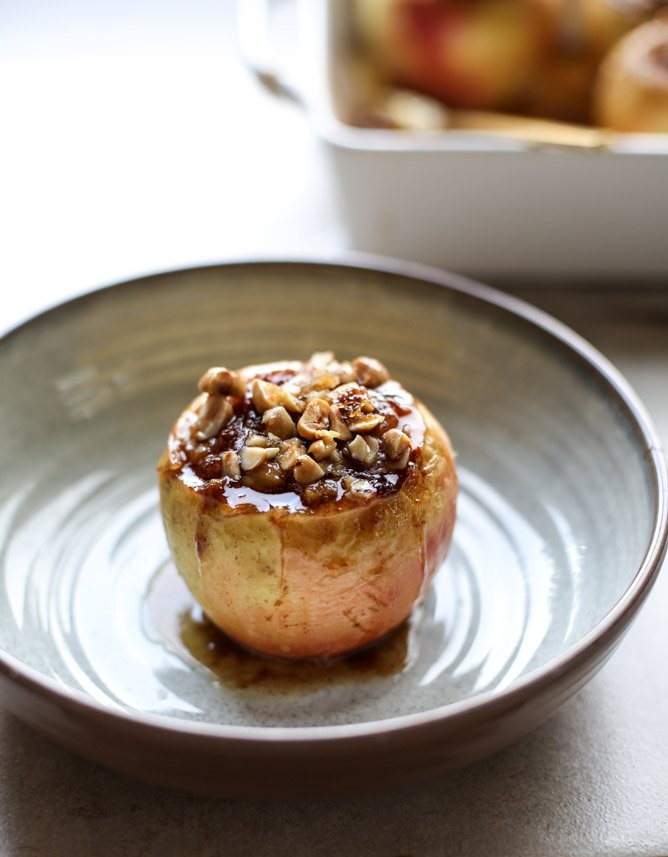
This snack is not only tasty — it’s lovely to look at, too. Boil 1 cup of steel cut oats in 4 cups of water. Stir in a pinch of cinnamon and nutmeg, and a drizzle of maple syrup, and turn the heat to low while the oats cook (covered) for 20 minutes.
Serve in a hollowed apple (we like ‘em overflowing). If it’s too tough to eat raw, microwave the cored apple for a minute, and then fill it up. Or, if time’s on your side, stuff the apples with oatmeal and then bake for 20 to 30 minutes until the apple is tender.
6 Sweet potato pie

This one is easy as pie. (Sweet potato pie, that is.) Cut a sweet potato lengthwise, and toss the orange-hued wedges in oil, and spices for a new take on a hamburger's BFF. Shhh, it’s a secret: A medium sweet potato has more potassium than a banana and five grams of fiber.
7 Pears and Cottage Cheese

Core a pear and slice it in half from top to bottom. Scoop low-fat cottage cheese on top of the pear and sprinkle with cinnamon or poppy seeds. One medium pear touts six grams of fiber.
8 Edamame Hummus
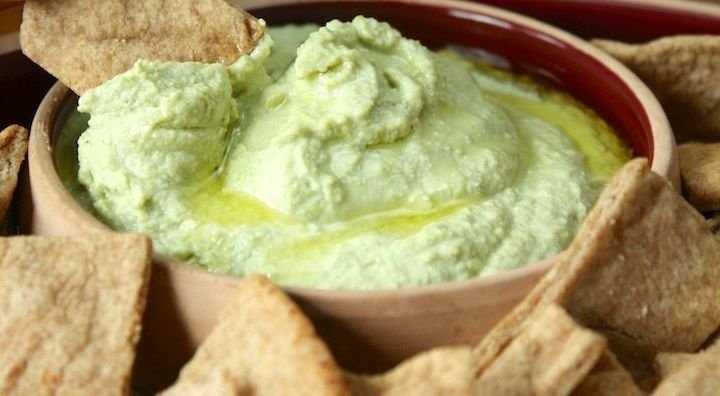
A new take on hummus, this spread adds some color and fiber to your dipping delight.
Bring a pot of water to a boil, and toss in 2 cups of frozen edamame (16 whopping grams of fiber!).
Boil for three minutes; remove from heat, and drain. Combine edamame, 3 cloves of garlic, and 6 tablespoons of olive oil, a pinch of salt, cumin, paprika, cayenne, and a squeeze of lemon in a food processor.
Blend until smooth. Serve with toasted pita bread or sliced veggies like carrots and cucumbers.

Hi! I am a robot. I just upvoted you! I found similar content that readers might be interested in:
http://www.slice.ca/health/photos/10-unhealthy-vegetables/